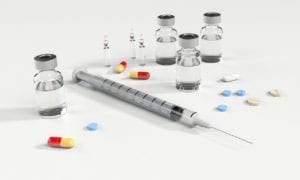Glycogen Storage Disease Type 1b (GSD1b)
What is glycogen storage disease type 1b?
Glycogen storage disease type 1b (GSD1b) falls under the larger category of glycogen storage disease (GSD). It impacts one of every 100,000 births. Affected individuals are unable to properly convert glycogen into glucose, putting them at constant risk of low blood sugar. Because the glycogen cannot be broken down, it accumulates in the cells and causes the characteristic symptoms.
What are the symptoms of glycogen storage disease type 1b?
The onset of symptoms typically occurs three to four months after birth, and they include:
- Seizures
- Hypoglycemia
- Neutropenia
- Makes affected individuals prone to infection
- Lactic acidosis
- Hyperuricemia
- Hyperlipidemia
- Short stature
- Protruding abdomen
- Thin appendages
There are a number of complications that can result from this condition, making it essential to seek treatment. If the proper treatment is not given, it can result in coma or death. Patients are susceptible to infections, which bring their own symptoms and complications. Additionally, oral health issues, gout, osteoporosis, and inflammatory bowel disease are common in people with GSD1b.
What causes glycogen storage disease type 1b?
A mutated SLC37A4 gene is responsible for GSD1b, and it is passed down in an autosomal recessive pattern. When this gene is altered, it results in a deficiency of glucose-6-phosphate translocase, an enzyme needed to break down glycogen. Because there is not enough of this enzyme, glycogen is able to accumulate in the cells.
How is glycogen storage disease type 1b diagnosed?
Doctors will perform laboratory tests to find the levels of lactate, glucose, cholesterol, triglycerides, and uric acid. If the levels are abnormal, GSD1b is suspected. A diagnosis can be confirmed through molecular genetic testing.
What are the treatments for glycogen storage disease type 1b?
Very careful monitoring of one’s diet is the major part of treatment. Affected individuals should avoid sucrose, fructose, galactose, and lactose, and they should eat around the clock. Ideally, GSD1b patients are eating every one to three hours to maintain their blood sugar. For young children, this often means a feeding tube.
To give more time between meals, doctors recommend drinking a mix of cornstarch and either water, soy milk, or formula. This mixture releases its sugars slowly. Because this diet is so low in nutrients and vitamins, patients have to take supplements.
Medication to increase the number of neutrophils is also common, and doctors should remain vigilant in preventing and treating any infections.
Where can I find out more about glycogen storage disease type 1b?
Glycogen Storage Disease Type 1b Articles







